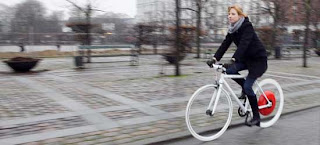
Sea Glass of Sanibel, created by Benchmark General Contractors, received the 2010 Honor Award from the American Institute of Architects Florida (AIA) in the Unbuilt Design category. In the picture above, Martin Gold, Director at the University of Florida’s School of Architecture (center), accepted the award on the team’s behalf from AIA President Richard J. Logan (left) and AIA Immediate Past President Gerald Steven Jernigan
Mark Anderson, owner of Benchmark General Contractors, and business partner Ron Rosen announced that the design for Sea Glass of Sanibel, a 12-acre sustainable residential community, received the 2010 Honor Award from the American Institute of Architects Florida (AIA) in the Unbuilt Design category. The award was presented recently at the AIA convention in Ponte Vedra Beach, Fla.
The jury of architects, chaired by Kirsten Murray, AIA of Olsen Kundig Architects and the 2009 AIA Firm of the Year, said AIA is excited to see this type of project in Florida.
“The use of new urbanist ideas is ideally suited to this climate and informal lifestyle,” Murray said.
In collaboration with the University of Florida’s School of Architecture and the Florida Community Design Center (FLCDC), the neighborhood includes approximately 12 single-family homes along Periwinkle Way on Sanibel. The property was previously the site of the Old Schoolhouse Theater and the home of the Sanibel Landscape Company, the first landscape nursery on the island.
Other highlights of the eco-friendly community include allocated nature areas, cluster development, a civic green promenade, butterfly meadow, water harvesting, and a community building dedicated to environmental education and shared resources.
“Our unique, groundbreaking lifestyle concept will reduce our footprint on the environment, an environmentally sensitive design that could become a model for future coastal communities in our region,” said Anderson.
Martin Gold, director of the University of Florida’s School of Architecture and executive director of the FLCDC, leads the design team which has submitted the schematics that integrate coastal ecologies, social connectivity, permaculture and sustainability as core principles of the neighborhood planning and architectural design.
Building is expected to begin later this year.



